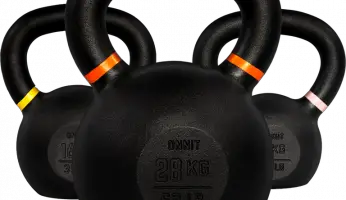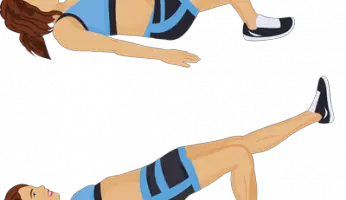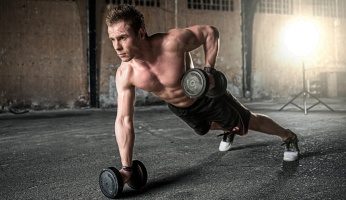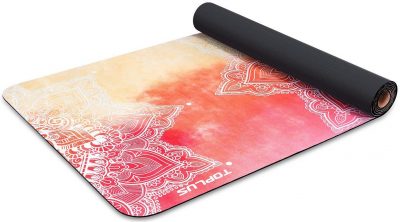How to Build Awesome Calves
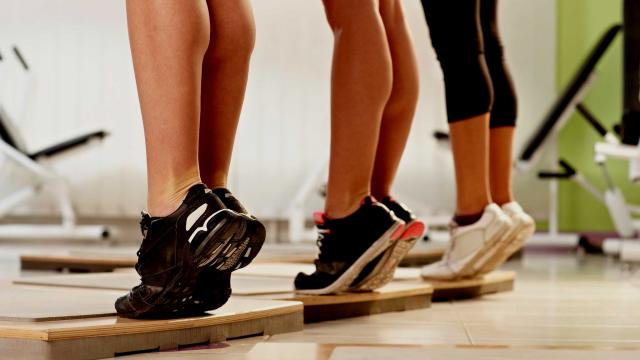
Source: www.muscleandfitness.com
updated January 1, 2019
The calves are one of the most clearly visible muscles of the body. Especially in the summertime, they are on show more than other body-parts. Your lower legs are advertising you all day long. More often than not, they’re going to be visible – unless you spend your life in sweat pants, that is. They are either going to announce you as out of shape or as toned, tight and muscular.
If you are after a balanced physique then your calves should be in proportion to your upper arms. Most guys, however, find that their calves are nowhere as big as their upper arms. They need to do some serious lower leg work in order to balance out their proportions. Yet, many people consider calves to be the most stubborn body part to develop. That’s not surprising when we consider that they are carrying around our body-weight all day long. They are used to carrying a heavy load. But that doesn’t mean that you can’t build an impressive set of lower wheels.
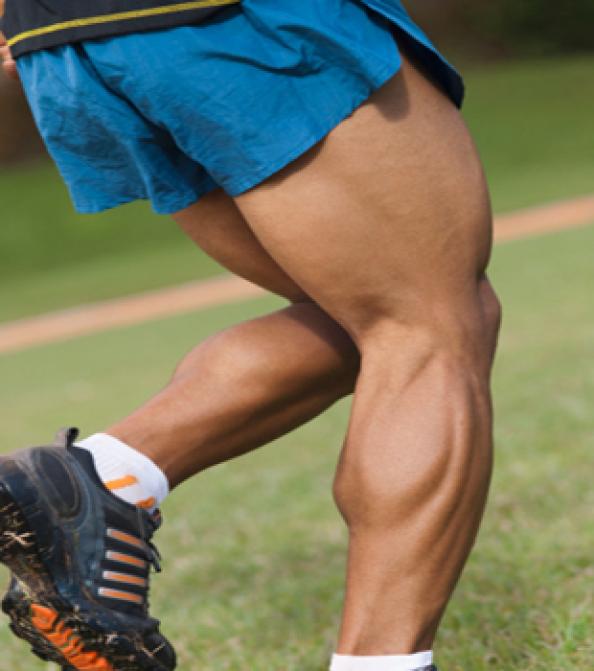
Source: www.mensfitness.com
The calves need to be worked with heavy resistance from a range of different angles. All day long we are walking and running with our calves. Our feet and ankles turn first one way, and then another. You suddenly change direction, push off with the calf, you climb upstairs and walk down hills. The calves move in a multitude of ways while all of this is taking place. With each of your calves being used to supporting your body weight, you need to shock the muscles by using substantially more than this to get them to take notice. Arnold Schwarzenegger’s calves were his weak point (he used to pose in pools of water to hide them) until he happened to train with his idol Reg Park in South Africa. Reg was used to doing high rep sets of calf raises with 1,000 pounds – double what Arnold was using. From this point on, Arnold’s calves took off. A few years later they were so impressive that he was accused of having calf implants (he didn’t!).
CALF ANATOMY

The calves are made up of two main muscle muscles – the gastrocnemius is the major muscle which runs from the inside of the knee joint down the lower leg and the soleus, which is a smaller muscle located on the inside back of the lower leg. These two muscles taper down the lower leg and merge together. When we walk, jump or run, the calf pulls up the heel in order for us to move forward.
NON-GYM CALF TRAINING
Sprinting
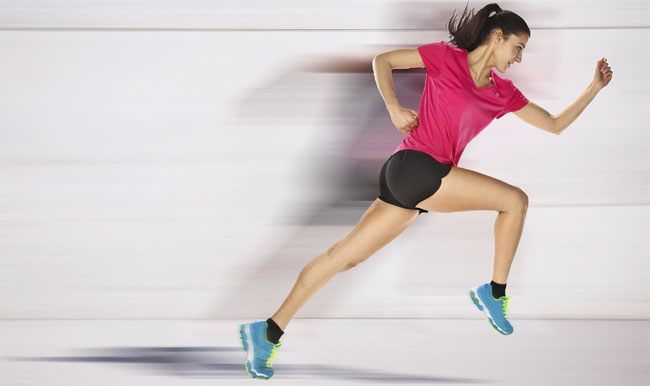
Source: www.popsugar.com
Running is an effective calf shaper. While general running will strengthen and shape your entire leg, to really target your calves, you need to sprint. In addition, sprinting will give your cardio fitness a terrific boost and burn a ton of calories. After a two minute warm-up on a flat track, sprint for 30 seconds. Run as fast as you can, lifting your legs high and pushing to the absolute limit (imagine that you’re being chased by a Rottweiler). When you’re done, walk back to the start position. Repeat for 6 cycles. Click here to find the best shoes for running. Beach Running: Another great way to work your calves is to run barefoot on the beach. The extra traction required to move through the sand gives your calves an extra challenge. Try and you’ll be pleasantly surprised at just how much harder you need to work to get this done.
Skipping

Source: www.healthwatch.today
Skipping is a great calf worker. The action of skipping forces you to remain on your toes. Use skipping as a warm-up to your main workout. Build up to 5 minutes of non-stop skipping.
Single Leg Hops
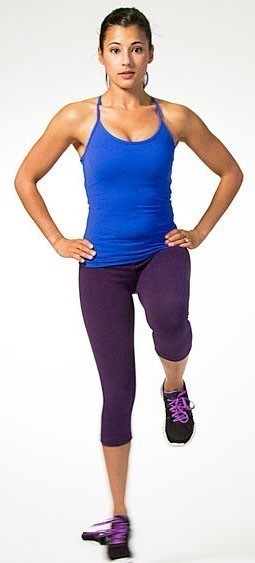
Source: www.skimble.com
Hopping on the spot for 30 seconds is a great calf exerciser. After 30 seconds swap legs. Repeat once and your calves will be screaming.
TRAINING CALVES IN THE GYM
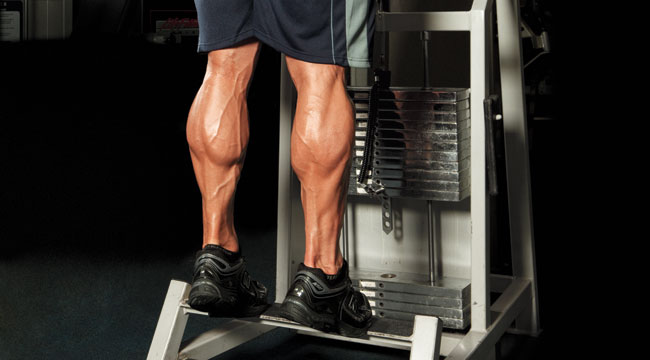
Source: www.muscleandfitness.com
The standing calf raise is the king of calf exercises. It is on this machine that extra weight is especially important. The standing calf raise allows you to target the two muscles that make up the calf – the gastrocnemius and the soleus. Seated calf raises, on the other hand, more directly target the soleus muscle. Many people treat the training of their calves as an afterthought. After they’ve hammered their main body-part, they’ll give a token ten minutes to blasting out a few sets of calf raises. Then they moan when their calves are not in proportion to the rest of their body.
Smart trainers will treat the calves just the same as any other body part. In fact, they should actually be trained more often than other body-parts. They are built for constant work and, thus, recuperate very quickly. Training them twice, or even three times per week would be entirely appropriate.
Because the calves are a very tough muscle and are used to a lot of work, they will only respond to shock treatment. This means utilizing every high-intensity training strategy that you can make use of.
Two effective intensity enhancers that should be employed with calves are drop sets and partial reps. With drop sets, perform 15 or so reps with the maximum weight that you can handle on the standing calf raise while maintaining strict form. Then immediately drop down the pin on the weight stack by about 30 pounds. Now do another 10 reps. Keep dropping down until have completed 5 drop sets. Your calves will be aching, which is just what you want.
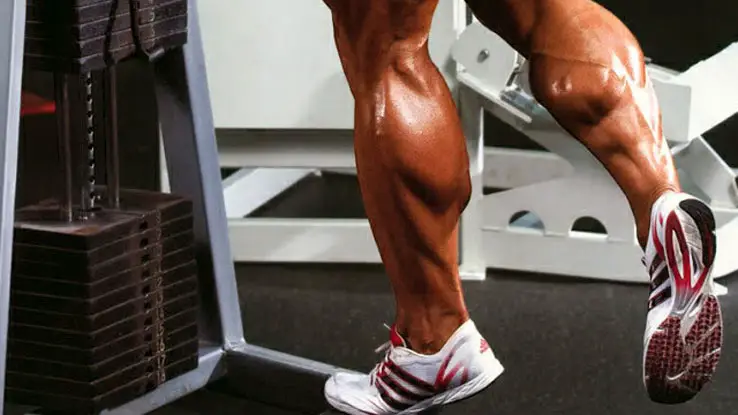
Source: www.t-nation.com
Partial reps involve doing half and quarter reps with extremely heavy weights. This puts a tremendous demand on the calves. Other shock tactics to fire the calves into renewed growth include staggered sets, rest/pause training, forced reps and supersets.
When you begin performing calf raises you will probably find that you are reasonably strong in the mid-range part of the movement but quite weak at the two extremes of a repetition. Your initial goal, then, will be to bring up your strength levels at full contraction and full extension. Once you have brought up your strength at these points, you will be ready to handle some heavy weight.
To bring up your initial calf strength, spend three months performing 4 sets of 15 reps of standing calf raises. Train your calves three times per week, getting 48 hours rest between training sessions. Make sure that you get a full range of motion, stretching fully in the bottom position and contracting strongly at the top. Use strict movement, making sure to keep your legs straight (no knee bend) in order to prevent the body from gaining momentum from your legs. Keep your feet pointing forward, allowing you to work the entire calf.
After three months of basic calf raises, you will be ready to start piling on the heavy poundages. Make sure that you do not compromise your form, especially as it regards keeping your knees locked out. Perform 4 sets of 15 reps of standing calf raises.
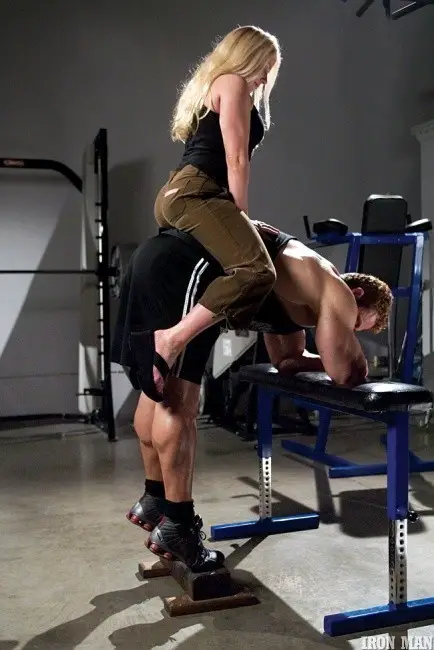
Source: www.ironmanmag.com.au
Add in a couple of extra movements to ensure that you are hitting the muscles from every angle.
Donkey calf raises allow you to hit the calves from a unique angle, bringing in a depth of development that you can’t get with the traditional standing raise. The bent over position also puts your calves into a pre-stretched position before you start. This means that you are training your calves through a fuller range of motion than with other variations of calf raises. Perform two sets of 15 reps on the donkey calf raise.
Nothing develops the lower and outer area of the calf better than the seated calf raise. Again, go as heavy as you can on this movement. Another two sets of 15 will finish off your calf workout.
OPTIMUM EXERCISE PERFORMANCE
Standing Calf Raises
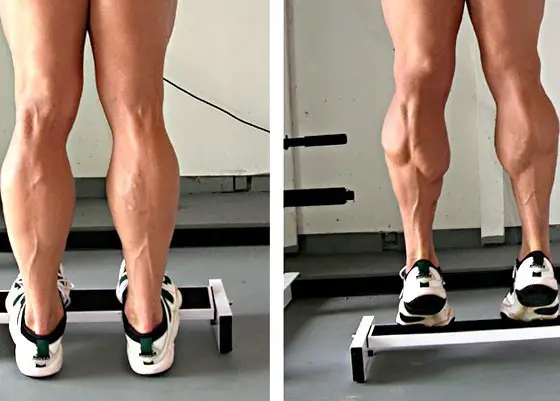
Source: www.cutandjacked.com
When you hop under the calf raise pads step onto the block so that just your toes are on it. By doing so you will allow yourself the greatest range of motion to be able to fully flex and contract your calves. Then, making sure that your knees are locked out, rise up on your toes until you are at a fully stretched position. Hold this top position for a second or two. From here lower to a fully contracted position.
Donkey Calf Raises
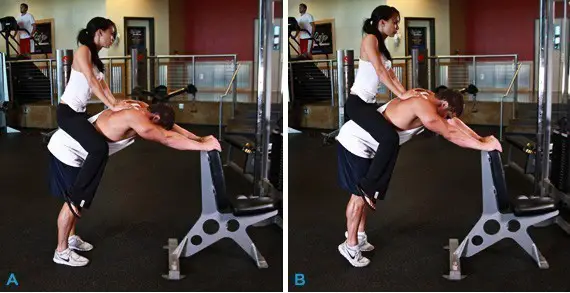
Source: www.bodybuilding.com
Most modern gyms have a donkey calf raise machine. if yours doesn’t, simply have your training partner sit on your back as you bend over a bench with your torso parallel to the floor. Position yourself in the machine with your hips underneath the pad. Keep an arch in your lower back. Have your toes only on the footplate. As you go down, keep a slight bend in the knees. Lift all the way up on your toes and then stretch completely down. Avoid going too heavy on this move, or you will be jerking the weight up and not getting the full range of motion. Keep your reps high in the 15-20 range.
Seated Calf Raise
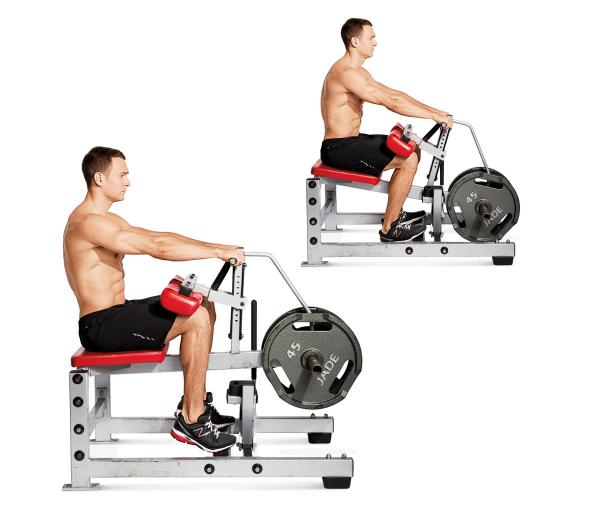
Source: www.mensfitness.com
Sit on a seated calf raise machine with your legs well wedged under the pads. Put your toes on the edge of the footplates so your heels are hanging off it. Now lift up on your toes so that you are on the balls of your feet. Squeeze the calves in the top position. Now stretch all the way down to get a full contraction. Don’t go too heavy. Rather you should focus on full contraction and high reps.
CONCLUSION
The calves are a challenging muscle to develop. By taking them seriously, though, you can transform your calves into bulls. It’ll take a lot of work, some heavy-ass weight and plenty of variety. But, once you’ve managed to build an impressive set of lower limbs, it’ll be worth every moment of effort. So, what are you waiting for – go claim the calves you deserve!


